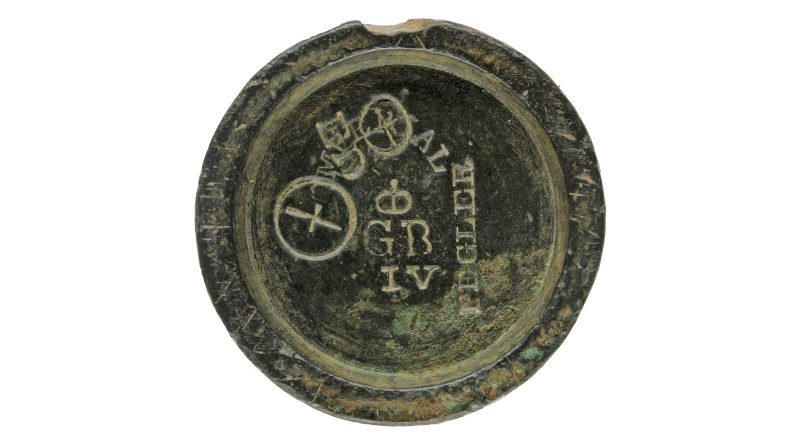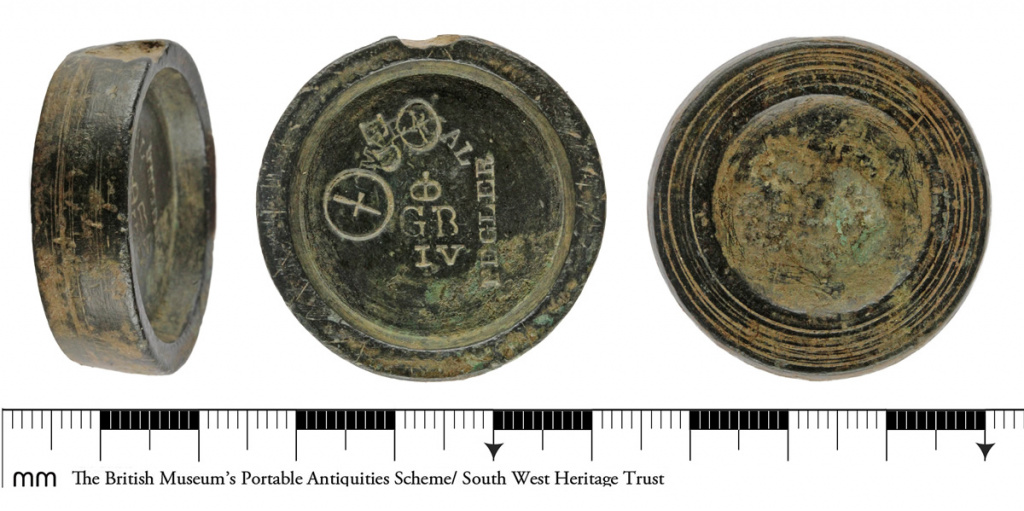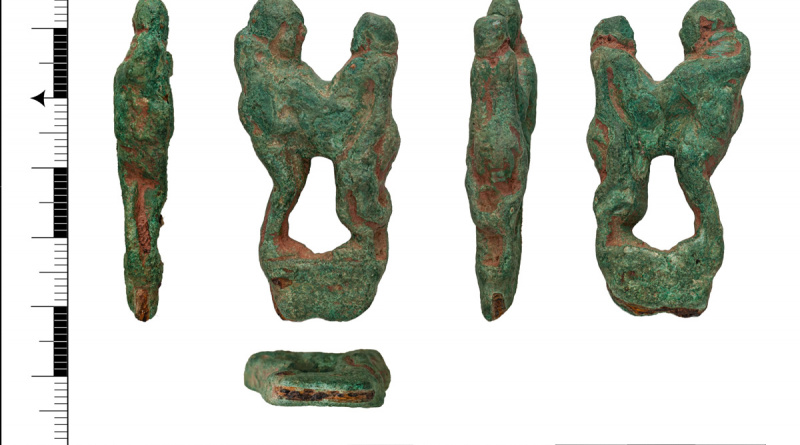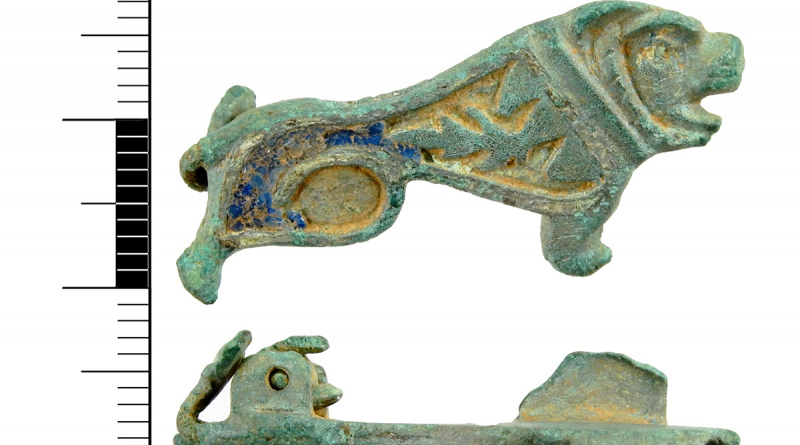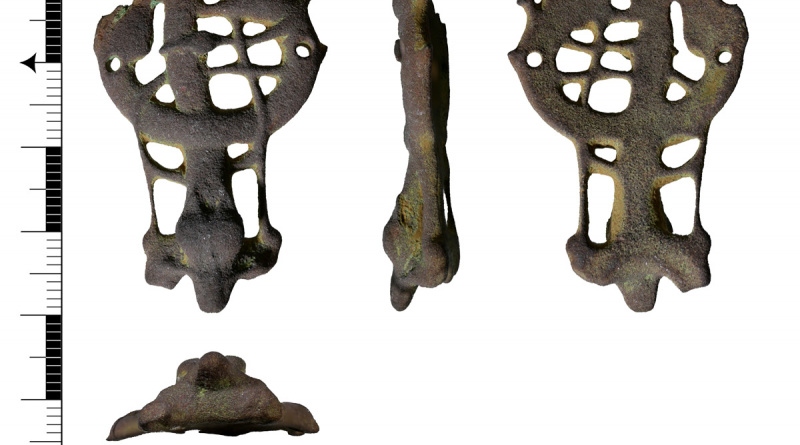PAS Finds (w/e 7/4/23) – Samuel Pegler
PAS Finds (w/e 7/4/23) – Samuel Pegler
My selection of the detecting finds recorded at the PAS during the week ended 7 April 2023
Featured Find
Trade weight verified by Samuel Pegler
A 19th century two ounce trade weight which has been designated a Find of Note of County Importance. The weight has been stamped with a number of marks.
Imperial weights
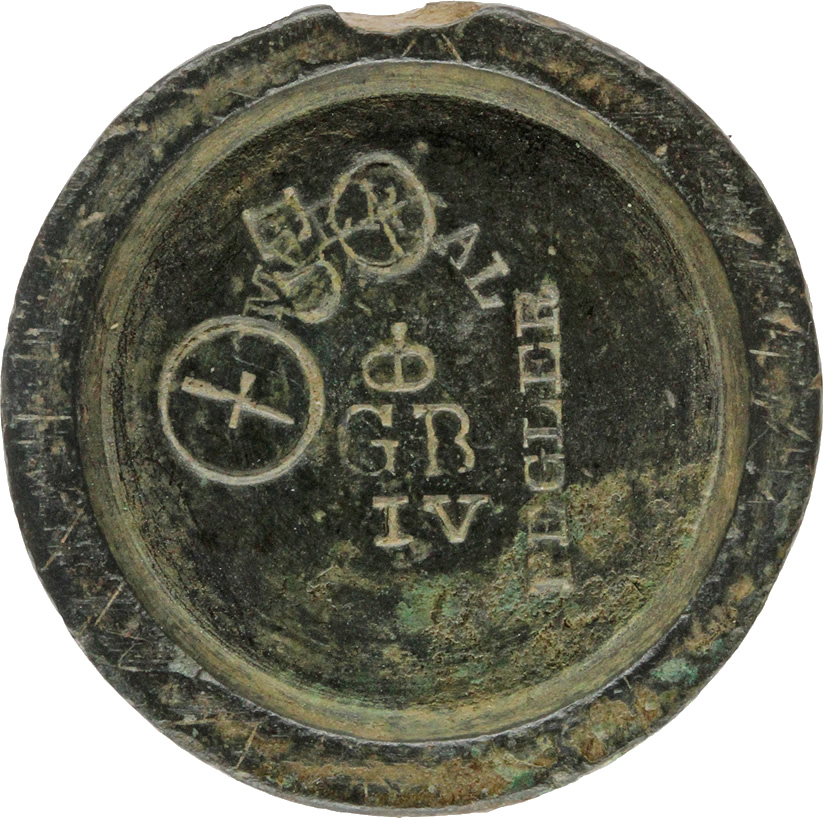
Somewhat obscured by later stamps, at the top is the the word “IMPERIAL” in an arc below which is a crowned “GR IV”. Imperial units were introduced by The Weights and Measures Act of 1824, during the reign of George IV. These marks may have been applied by the manufacturer or at a later date to indicate that it complied with this Act.
The Act required that each county purchase an official copy of each of the new Imperial standards for length, weight and measure. Inspectors would use these to verify traders’ weights and, if satisfactory, apply their verification marks to them.
Verification marks
There are four verification marks on the weight. At 9 o’clock there is a circle containing an elongated cross, above that is “ED” and a circle containing a square cross and then vertically the name “PEGLER”.
The “ED” and the circle above it is an abbreviation and mark for East Dorset. In 1834, three inspectors were appointed for Dorset, one each for West Dorset, Mid-Dorset and East Dorset. They had each had similar marks with a two letter abbreviation and a circle with a cross in it.
The name “PEGLER” refers to a Samuel Pegler, who was the inspector for East Dorset from 1834-49. The other mark, of a circle with an elongated cross, is probably his personal mark. It is suggested that this may be a representation of a dagger or possibly a ropemaker’s spinning hook.1 A dagger, (not in a circle), was used as a verification mark of the London Guildhall but this is more likely Pegler’s own mark. He was an active Freemason2 and so perhaps he used one of their symbols.
In 1838 a report was issued on the activities of the three Dorset inspectors. It found that the county had spent a total of £454 on them without a single conviction taking place.3
Samuel Pegler
Samuel’s father, Nathaniel, was a gunsmith a watch maker in Southampton around 1810. Samuel followed in his father’s footsteps and set up his own watch, gun and silversmith business in Blandford, Dorset.

Unusually there are several portraits of Samuel. The Pegler family were friends with and provided financial support to an up-and-coming young artist named Alfred Stevens. Alfred painted Samuel a number of times and his portraits of him are now in several galleries including the National Portrait Gallery and the Tate.
The reason that Samuel ceased to be an inspector in 1849 is that he returned to his father’s shop in Southampton. One source says that this was an enforced move. A gentry customer had failed to pay his bill and Samuel decided to announce the fact in a local paper. This caused other local notables to boycott his business.4
The shop in Southampton would continue in the Pegler family until it was destroyed during the Blitz in War World II.

